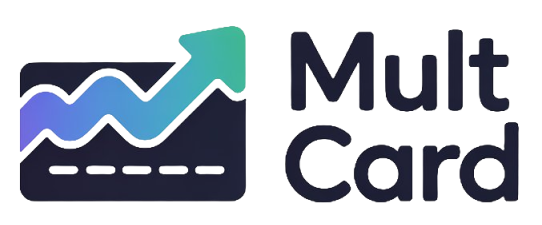As a business owner, you’re constantly looking for ways to improve your bottom line and make every dollar count. What if your regular, everyday expenses could be transformed into a new revenue stream? This isn’t a far-fetched idea; it’s the smart reality of using the right financial tools.
Business credit cards offer more than just a convenient way to pay for supplies or manage cash flow. They are strategic assets designed to reward your company for the spending it already does. This guide will walk you through everything you need to know to harness the power of cash back and turn your expenses into earnings.
Why Business Credit Cards are a Cash Back Powerhouse
While personal cash back cards are great, business-specific cards operate on a different level. They are built from the ground up to cater to the unique spending patterns and higher volumes of a commercial enterprise. Understanding these distinctions is the first step toward maximizing your rewards.
Beyond Personal Cards: The Key Differences
Switching from a personal card to a dedicated business card unlocks several strategic advantages that directly impact your financial efficiency and earning potential.
- Higher Credit Limits: Businesses typically have larger expenses than individuals. Card issuers recognize this and generally offer significantly higher credit limits on business accounts, ensuring you can cover major purchases like inventory, equipment, or large advertising campaigns without issue.
- Business-Centric Reward Categories: Business cards are tailored to how companies spend money. You’ll find high reward rates on categories like shipping, office supply stores, internet and phone services, and digital advertising—categories rarely featured on personal cards.
- Simplified Accounting: The most crucial operational benefit is the clean separation of business and personal finances. This is not just a best practice; it’s essential for accurate bookkeeping, simplified tax preparation, and protecting your personal assets from business liabilities.
The Mindset of “Free Money”
It’s easy to view cash back as a simple discount, but its true potential is realized when you reframe it as a new, passive revenue stream. Think of every dollar in rewards as profit that required no extra work to generate. For example, earning 2% cash back on $100,000 in annual expenses isn’t just a $2,000 discount; it’s $2,000 in pure profit that can be reinvested into your business. Over time, reinvesting these rewards into marketing, new equipment, or employee development can create a powerful compounding effect, helping to fuel your company’s growth.
Decoding Cash Back Structures: Finding Your Perfect Match
Not all cash back programs are created equal. The two primary structures—flat-rate and tiered/bonus category—cater to different types of business spending. Choosing the right one is fundamental to your success.
Flat-Rate Rewards: The Simple & Steady Approach
Flat-rate cards are the epitome of simplicity. They offer a single, fixed percentage of cash back on every single purchase, regardless of the category. This rate is typically between 1.5% and 2.5%.
- Pros: The main advantage is effortless optimization. You never have to worry about whether a purchase falls into a specific bonus category. It’s a “set it and forget it” strategy that guarantees a solid return on all your spending.
- Cons: While simple, it may not yield the absolute highest return if a large portion of your spending is concentrated in a few specific areas that could earn 3%, 4%, or even 5% with a tiered card.
- Best For: Businesses with diverse spending across many categories, or for owners who prioritize simplicity and don’t have the time to track complex rewards structures.
Tiered & Bonus Category Rewards: The Strategist’s Choice
Tiered or bonus category cards are designed for optimization. They offer a high rate of cash back (often 3-5%) on specific business categories and a lower base rate (usually 1%) on all other purchases. Some cards have permanent bonus categories, while others rotate them quarterly.
- Pros: The earning potential is significantly higher if your business expenses align with the card’s bonus categories. A company that spends heavily on digital advertising, for instance, could earn substantially more with a card that rewards that specific category.
- Cons: This approach requires more active management. You need to be aware of the bonus categories, any spending caps, and potentially enroll in rotating categories each quarter.
- Best For: Businesses with predictable, high-volume spending in defined areas like logistics, software, or dining.
Comparative Overview: Flat-Rate vs. Tiered Rewards
| Feature | Flat-Rate Cards | Tiered/Bonus Category Cards |
|---|---|---|
| Simplicity | High. No categories to track. | Low to Medium. Requires active management. |
| Earning Potential | Good and consistent. | Potentially excellent if spending aligns. |
| Best For | Varied spending, prioritizing ease of use. | Concentrated spending in specific areas. |
How to Choose the Right Business Cash Back Card
Selecting the ideal card involves a quick but critical analysis of your company’s financial habits. This isn’t about finding the “best” card on the market, but the best card for your business.
Step 1: Analyze Your Business Spending
This is the most important step. Don’t guess—use data. Look through your last 6-12 months of accounting records, bank statements, and expense reports. Categorize your spending to identify your top three to five expense areas. Are you spending the most on shipping, software subscriptions, client dinners, or Facebook ads? This data will immediately tell you whether a flat-rate or a tiered card is likely to be more profitable.
Step 2: Compare Annual Fees vs. Potential Rewards
An annual fee can be intimidating, but it shouldn’t be an automatic deal-breaker. Cards with fees often provide much higher reward rates or premium benefits that can easily outweigh the cost. Perform a simple break-even analysis:
(Estimated Annual Rewards) – (Annual Fee) = Net Annual Gain
A card with a $95 annual fee that earns you an extra $500 in cash back each year is a far better deal than a no-fee card that only earns you $200. Always do the math.
Step 3: Look Beyond the Cash Back Rate
The rewards rate is just one piece of the puzzle. Consider the card’s entire value proposition:
- Welcome Bonus: A large sign-up bonus can provide significant value in the first year, sometimes worth hundreds of dollars after meeting a minimum spending requirement.
- Introductory 0% APR: If you’re planning a large purchase, a 0% introductory Annual Percentage Rate (APR) on purchases can give you time to pay it off interest-free, acting as a short-term loan for your business. It’s critical to understand how promotional APRs work to avoid unexpected interest charges.
- Employee Cards: Check if the card offers employee cards at no extra cost. This helps you capture all company spending under one rewards account while allowing you to set individual spending limits for control.
- Ancillary Benefits: Many cards include valuable perks like purchase protection, extended warranties, car rental insurance, and travel credits that provide tangible value and peace of mind.
Advanced Strategies to Maximize Your Earnings
Once you’ve chosen your card, you can employ a few key strategies to ensure you’re wringing every last drop of value from your rewards program.
The “Two-Card” Strategy: Combining Flat-Rate and Tiered
For the ultimate optimizer, using two cards can be a powerful approach. Use a tiered card specifically for its high-value bonus categories and a high-rate flat-card (e.g., a 2% card) for every other purchase. This hybrid system ensures you’re always earning an excellent rate on every single dollar your business spends.
Example: Use Card A for 4% cash back on advertising and shipping, and use Card B for 2% cash back on all other expenses, including inventory, utilities, and professional services.
Leveraging Employee Cards for Consolidated Earning
If you have a team, don’t let their business-related spending go unrewarded. By issuing employee cards linked to your main account, you centralize all spending and, more importantly, all rewards. Modern card platforms offer robust controls, allowing you to set spending limits per employee, monitor transactions in real-time, and streamline your expense reporting process.
Paying Your Bill in Full, Always
This is the golden rule of any rewards strategy. Business credit cards often come with high interest rates. Carrying a balance and incurring interest charges will quickly and completely negate any cash back you’ve earned. To make this strategy profitable, you must treat your credit card like a debit card and pay the statement balance in full every single month, without exception.
Common Pitfalls to Avoid
Being aware of potential traps is just as important as knowing the best strategies. Avoid these common mistakes to keep your rewards strategy on track.
Ignoring the Fine Print
Always read the terms and conditions. Pay close attention to details like caps on bonus category spending (e.g., “5% cash back on the first $25,000 spent annually”), rules about rewards expiration, and the presence of foreign transaction fees if you do business internationally.
Mixing Personal and Business Expenses
This is a critical error for both accounting and legal reasons. Co-mingling funds makes it incredibly difficult to track your business’s true financial health and can create significant problems during tax time. The IRS strongly advises keeping finances separate to maintain the legal protection of a corporate veil. This separation is a foundational principle of sound business financial management.
Chasing Rewards into Unnecessary Debt
Never let the promise of rewards entice you to spend more than you otherwise would. The purpose of a cash back card is to earn money on planned, necessary business expenses. If you find yourself buying things you don’t need just to earn a few extra dollars in rewards, the strategy has backfired. Stick to your budget and let the rewards accumulate naturally.
Transforming Expenses into Assets
Ultimately, a business cash back credit card is far more than a piece of plastic. It is a dynamic financial instrument that, when chosen carefully and used responsibly, can create a meaningful and recurring revenue stream for your company. By analyzing your spending, selecting a card structure that aligns with your financial habits, and committing to disciplined payment practices, you can effectively transform your expenses into a valuable asset that contributes directly to your bottom line.
The journey to smarter business spending starts with knowledge. By applying the principles in this guide, you can confidently navigate the options and implement a strategy that works for you. For more in-depth information, you can explore a comprehensive guide to business credit cards and financing options from trusted sources.




